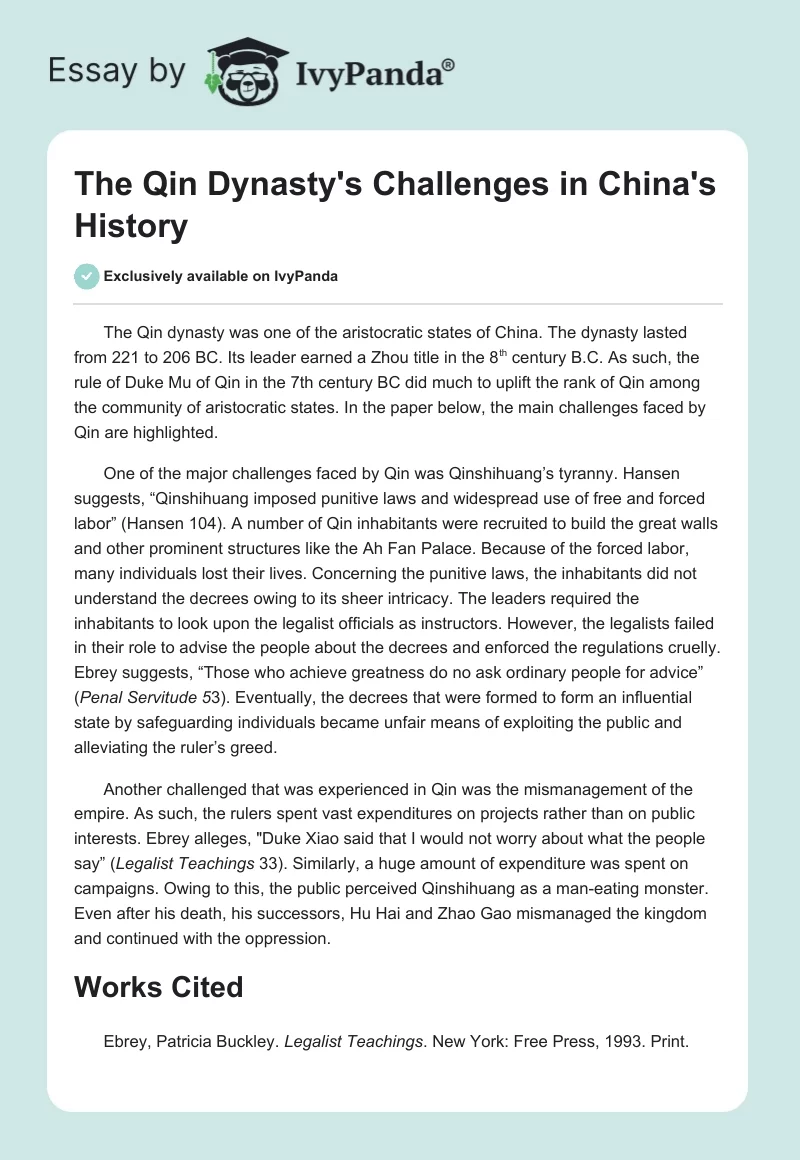The Qin dynasty was one of the aristocratic states of China. The dynasty lasted from 221 to 206 BC. Its leader earned a Zhou title in the 8th century B.C. As such, the rule of Duke Mu of Qin in the 7th century BC did much to uplift the rank of Qin among the community of aristocratic states. In the paper below, the main challenges faced by Qin are highlighted.
One of the major challenges faced by Qin was Qinshihuang’s tyranny. Hansen suggests, “Qinshihuang imposed punitive laws and widespread use of free and forced labor” (Hansen 104). A number of Qin inhabitants were recruited to build the great walls and other prominent structures like the Ah Fan Palace. Because of the forced labor, many individuals lost their lives. Concerning the punitive laws, the inhabitants did not understand the decrees owing to its sheer intricacy. The leaders required the inhabitants to look upon the legalist officials as instructors. However, the legalists failed in their role to advise the people about the decrees and enforced the regulations cruelly. Ebrey suggests, “Those who achieve greatness do no ask ordinary people for advice” (Penal Servitude 53). Eventually, the decrees that were formed to form an influential state by safeguarding individuals became unfair means of exploiting the public and alleviating the ruler’s greed.
Another challenged that was experienced in Qin was the mismanagement of the empire. As such, the rulers spent vast expenditures on projects rather than on public interests. Ebrey alleges, “Duke Xiao said that I would not worry about what the people say” (Legalist Teachings 33). Similarly, a huge amount of expenditure was spent on campaigns. Owing to this, the public perceived Qinshihuang as a man-eating monster. Even after his death, his successors, Hu Hai and Zhao Gao mismanaged the kingdom and continued with the oppression.
Works Cited
Ebrey, Patricia Buckley. Legalist Teachings. New York: Free Press, 1993. Print.
Penal Servitude in Qin Law. New York: Free Press, 1993. Print.
Hansen, Valerie. The open empire: a history of China to 1600. New York: Norton, 2000. Print.


